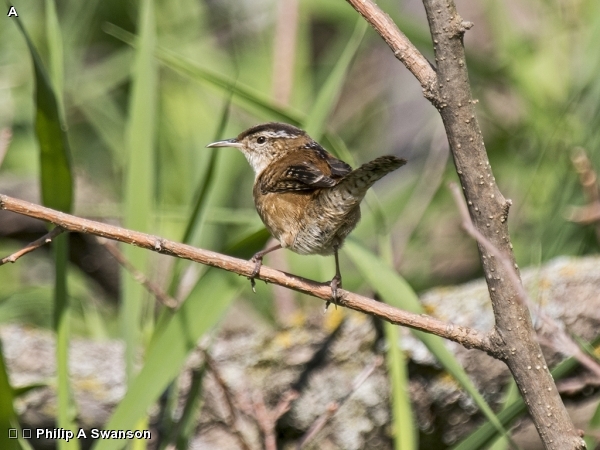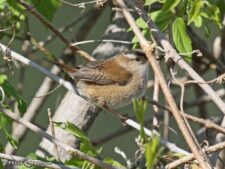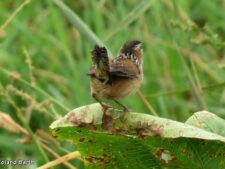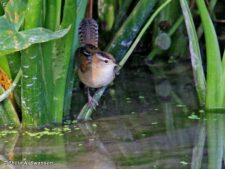
5.0 inches long. The Marsh Wren is a small brown bird with a thin bill. The tail is frequently held upright. The upperparts are cinnamon brown and there is a triangular black patch on the upper back that is striped with white. There is a bold white stripe extending behind the eye. The crown is not streaked. The breast and throat are white. The belly and flanks are buffy. The wings and tail are barred with black.
The Marsh Wren is an uncommon migrant through the area that is seen in April through May and again in September through mid November.
The Marsh Wren is generally found in marshes. It was formerly called the Long-billed Marsh Wren. It was renamed Marsh Wren to better distinguish it from the closely related Sedge Wren by emphasizing habitat differences between the two species. The female apparently chooses her mate depending on the singing skill of the male. A great disparity exists in the breeding success of the males and about half of the males in some populations mate simultaneously with 2 or more females. Marsh Wrens are known to destroy eggs, not only of other species but also of other Marsh Wrens. The song is a gurgling, mechanical trill “tek, tuk, t, jejejejejejejeje”.
Disclaimer: The content of NatureSearch is provided by dedicated volunteer Naturalists of Fontenelle Forest who strive to provide the most accurate information available. Contributors of the images retain their copyrights. The point of contact for this page is: Phil Swanson.




